Mrs Renette who lives in Custine in the commune of Cavaillon turned out to be the main object of today’s field visit. This was not then planned when I left the hotel this morning, accompanied by my field coordinator – Jery Rambao. Our initial intention was to find “Mr Sony“ who lends his irrigation pump to a communal farmer school that we visited two days earlier. While searching for Mr Sony’s house, we stumbled upon a plot of land with irrigation equipment. Judging from the color of the suction pipe in the field, we suspected the farmer was using one of the RESEPAG II pumps. These pumps are fairly distinctive, and have similar features such as the green suction pipe that connects the pump to the water source. We stop our pickup truck and ask people nearby about the owner of the plot. We soon learn that her name is Mrs Jesula, commonly called “Ficelle.” We are also told that Ficelle rents the pump from a neighbor – Mrs Renette – and employs a male operator to irrigate the plot. At this point, our attention turns to Mrs Renette instead of Mr Sony.
A beautiful house at the top of the hill
We make it to Renette’s house at approximately 12:15 pm, local time. The house is very easy to find. This is clearly the most luxurious farmer house I have visited to date in Les Cayes, the southern district of Haiti. Built with concrete and iron in a modern style, the house is perched at the top of a hill, surrounded by other less generous looking dwellings. The typical smallholder house has no electricity and is relatively small, built with mud, a thatch or aluminum sheet rooftop, tiny windows and traditionally made aluminum sheet or wooden doors. Instead, Renette’s big house is painted in beautiful colors, has a concrete slab ceiling, metal doors and windows, a water tank and even electricity that she uses for lighting and to power a commercial fridge. Renette inherited the house from her late husband and lives in it with her four children. Her husband was a prominent cattle farmer whose herd amounted over ninety animals. Only about 30 of them remain in Renette’s custody.
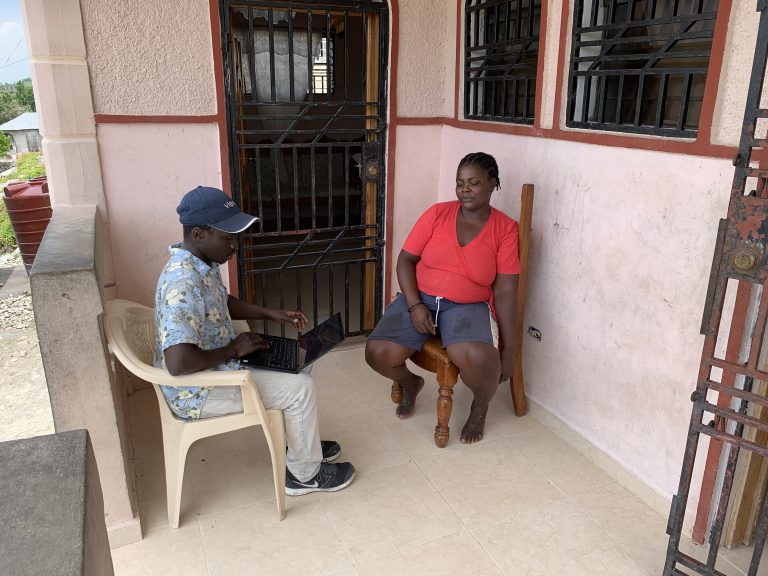
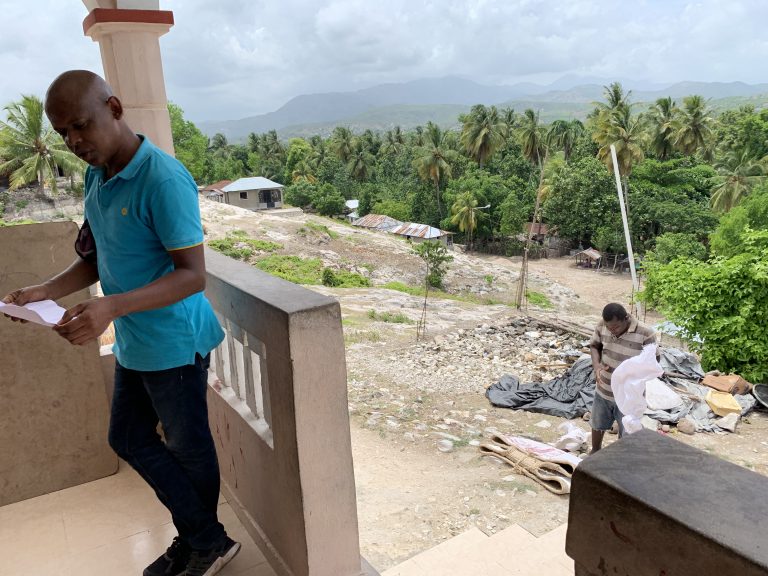

Starting the interview
We find Renette in her shop. She runs a small convenience store style business from her house, in addition to owning cattle and growing various crops on her farm. Renette greets us with a generous smile and offers us comfortable chairs and drinks, even without prior notice for the visit. “I sell everything in my shop, from foodstuff to cosmetic products,” she tells us. Our conversation soon switches to her agricultural and pump rental activities, as I was anxious to find out about how Renette uses the irrigation pump that she received in September 2008 through RESEPAG II.
I start out by asking Renette about her logbook, an A3-size form that we designed for pump recipients to help them with record keeping. It also serves as a program monitoring tool, allowing the project team to collect valuable utilization and rental activity details. These details include the agricultural season during which farmers use the pumps, whether they irrigate their own plots or rent the pumps out, which crops are irrigated, how far the pump moves from the recipient’s house, the mode of transportation and associated costs, the amount of land irrigated and the duration of each operation, the amount and cost of gasoline used, whether the pump owners or the renters provided gasoline, rental fees and payment terms.
The logbook
Renette has neatly filled her logbook which impresses me. The records suggest that she used the pump primarily on her own farm, during the winter 2018 season when she planted black peas (“pois noir”). She irrigated her plot three and four days in a row, in January and February 2019. Renette bought 28 marmites (75.6 Kg or 166.67 lbs) of seeds at the local market for GHT 265 per marmite (USD 1.05/Kg or USD 0.48/lbs). She produced the black peas on a 1 carreau (1.29 hectare or 3.19 acres) plot. Renette harvested 220 marmites out of which she sold about 200 marmites for a total revenue of GHT 60,000 (USD 645).
Transaction Costs
Renette employed two men to operate the pump and setup the irrigation system on her farm. She paid each person GHT 500 (USD 5.40) a day. The pump was carried to her farm on a motorbike that cost GHT 50 (USD 0.54) for each transaction. Irrigation pipes were transported to the field on the back of her mule. Farmers here rely widely on these equine hybrids to transport humans and goods, because they combine the resiliency of male donkeys and the strength of female horses.
This season, Renette planted potatoes on her plot, but she lost it to the drought. Renette did not bother to irrigate her potato farm this spring 2019 season. “This is not cost effective at all!” she exclaims. Renette could have planted other high value crops such as peppers and eggplants. She thinks they require a lot of work and she does not have any relevant experience growing those crops. She could have joined a farmer school to acquire the knowledge, but the unhealthy looking crops on the communal plot did not convince her. In the winter 2019 season, Renette plans on planting peas and peppers and to use her pump for irrigation purposes.
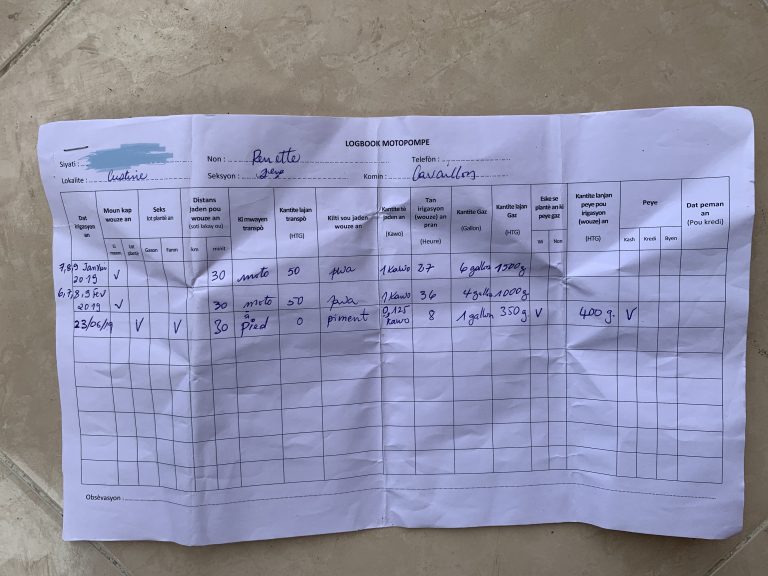
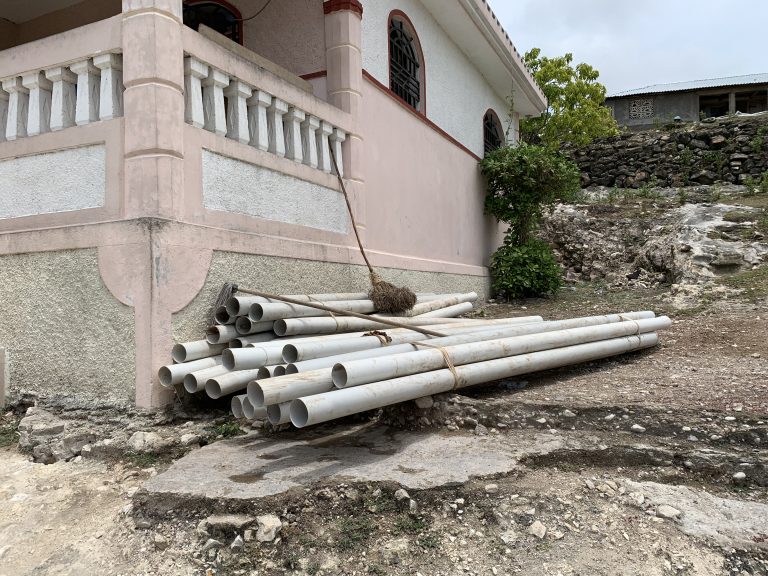
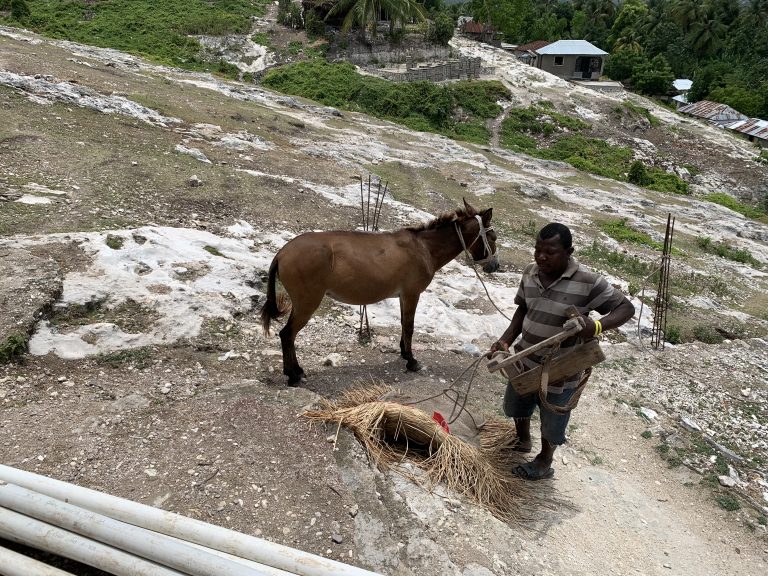
Renette’s pump rental business
Renette lent her pump – free of charge – to a farmer school in the neighborhood. This transaction did not make it to the logbook. Renette’s first paid rental transaction took place on Sunday June 23rd with Mrs Ficelle. The latter has booked the pump for another irrigation operation scheduled for this coming Sunday. Other than Ficelle’s peppers farm, Renette complains that she does not have a strong demand for rentals. With sporadic rains, most farmers have not planted crops that they like to irrigate such as peas, tomatoes and peppers. Also, Renette says that there are several RESEPAG II pumps in the area which other farmers can rent instead of hers. When I ask how many RESEPAG II pump owners she knows in the area, Renetter promptly replies “eight.” This number matches our own records from the endline data collected so far.
Overall, Renette says she has a positive experience with owning the pump. Since September 2018, she has maintained the pump only once when she spent GHT 150 (USD 1.6) to replace the spark plug and another GHT 250 (USD 2.7) for an oil change. Owning a pump is critical for producing peas on Renette’s own farm. She used to rent pumps from other farmers in the past, which was challenging because those pump owners would prioritize their own farms before rendering irrigation services to others. Also Renette thinks she could generate more revenue renting her pump. She says that she does not even need to advertise her services as people know her well in the area. According to Renette, proximity to a pump owner’s plot or residence is a key demand factor. Farmers like to rent from their neighbors to reduce transportation costs.
At around 1:20 pm, we thank Renette for being so generous with her time and wish her good luck for the upcoming season. I find the short visit with Renette to be quite enlightening. Coming into the field, I thought that greater accessibility to irrigation pumps would automatically allow farmers to start the agricultural season on time. This is not the case judging from the anecdotal evidence. The agricultural campaign does not start until it has rained enough and farmers are confident that they will have a good harvest. Most farmers here still rely on rainfall heavily, resorting only to using irrigation pumps as a supplement when they can afford it. In other terms, rainfall and irrigation pumps have a complementary relationship. “We first need to have enough water in the river,” as Renette puts it. Also to most farmers, it makes economic sense to only irrigate high value crops, such as beans and vegetables (e.g., peppers, tomatoes and onions.)